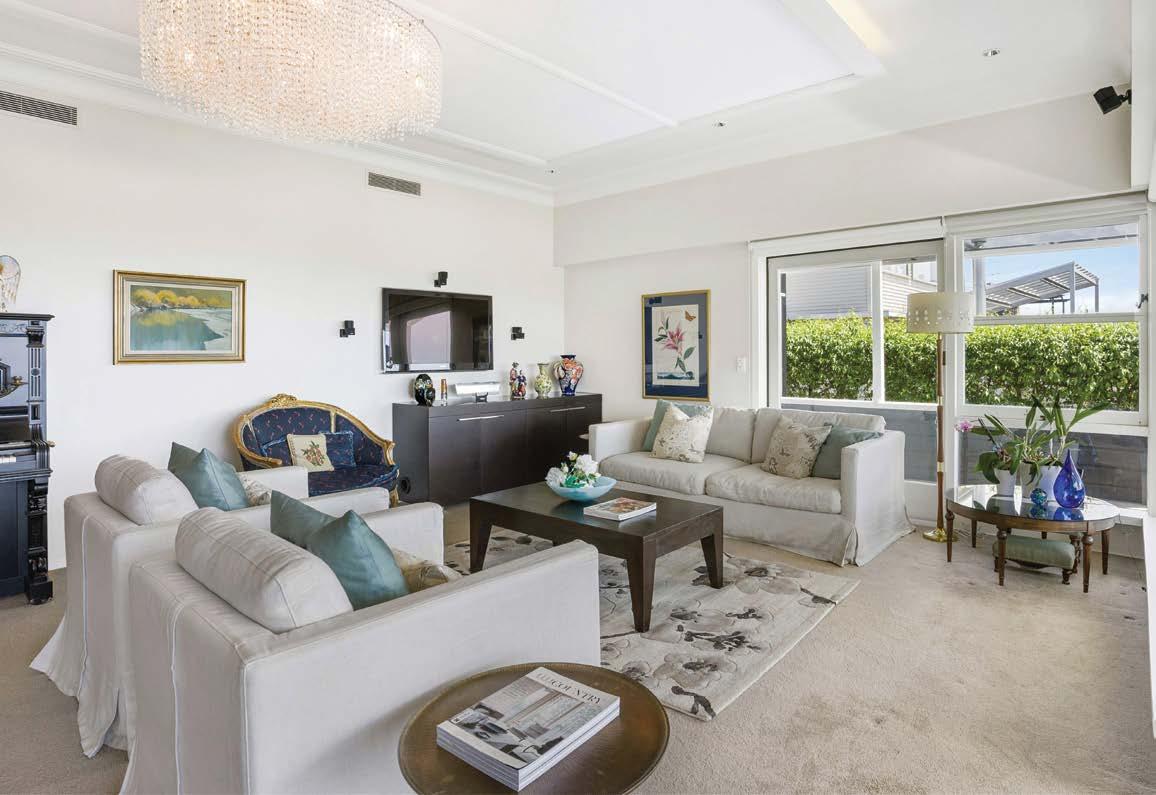
6 minute read
NEW Best Practice Score for Villages
Historically, comparing retirement village offerings on paper has been extremely difficult. You normally only get a copy of the ORA just prior to signing up. Only since April 2020 has the RVA (Operators Assoc.) introduced a Key Terms Summary (KTS) for its members and made it mandatory, but again, you may only get to see the KTS when you receive the ORA… and that’s if they give you one. If they don’tmake sure to ask.
The RVR has worked on a Best Practice score for the past 18 months, to help prospective and existing residents compare village offerings. We ask 18 questions, mostly related to financial terms in ORA’s.
Advertisement
We then use a multiplier to weight some answers more than others, and the result is a percentage score out of 100. Where a question is not answered, we calculate the percentage without that question.
About the table:
We’ve listed a handful of providers, including the “Big 6”. Most of the data has been supplied by residents and, where possible we have verified it with the operator. The data is focused on Independent Living Units only. ORA terms for Serviced Apartments and Care Suites are likely to be different. We’ve made every effort to have the data correct at time of printing, but recommend you check with the operator.
Where you see a *, the provider may have updated it but still have this as an existing term or are looking to update it retroactively. It may also only partially apply. We recommend you check with the provider.

Each answer is scored based on the benefit to the resident eg. A minimum age of entry of 55 or less scores max points, while an age of 75 or over scores lowest. We have used colour bands to indicate the score range achieved by providers. The smiley faces should be self explanatory!
Further details about the Best Practice scoring can be found at www.rvr.org.nz/resources.
What did you say?!?
Hearing difficulties in the Communal Areas of Retirement Villages
Opinion piece by Ron Goodey CNZM, BMedSci, MB ChB, FRACS… and fellow resident.

The prime purpose of retirement village businesses is to create profit for their shareholders. However, their core business is to develop & then operate villages which meet the needs of elderly customers. When elderly folk move into retirement villages we free up homes for families. We accept a degree of downsizing and decluttering. However, we do not expect, nor should we accept, a downgrading of the quality of accommodation or of the environment in which we live.
For most residents, and especially for those who live alone, the main place to communicate, develop friendships and enjoy supportive collegiality, is in the communal rooms and cafeteria. Unfortunately, many residents in many of New Zealand’s retirement villages find they cannot hear each other in the communal rooms and cafeterias, especially during social gatherings. Therefore, they have difficulty developing the friendships and the supportive collegiality they desperately need. Consequently, these residents tend to retire depressed from communal activities to the loneliness of their dwelling.
Why it is difficult to hear in the indoor communal rooms of many retirement villages.
How we hear. When we speak, the sounds we create are vibrations in which air molecules bump against each other carrying our words across the room, including to those we are speaking to. The vibrating air molecules then cause the listeners eardrum to vibrate which causes a chain of 3 tiny hearing bones to vibrate which then cause vibrations of thousands of microscopic hairs arranged in long rows within our inner ears. The microscopic hairs at one end of the rows vibrate mostly with high tones & at the other end with low tones. As the hairs vibrate, the tiny cells from which they arise release chemicals which create electrical messages in adjacent nerve endings. Those electrical messages are then carried through the nerves to the hearing centres within our brain where we recognise the meaning conveyed by the sound waves.
Aging effect. As we age, the hair cells which vibrate with high frequency sounds deteriorate & many die. Our ability to hear high frequency consonants deteriorates even in ideal environments. Hearing aids help us make better use of the hair cells we still have but do not replace the missing hair cells. Background noise reduces the ability of everyone to hear consonants & understand speech, but it is disastrous for elderly folk who have lost hair cells.
Solution.
Fortunately, there is a measure which greatly reduces background noise in indoor communal areas and therefore helps us to hear the essential hightoned consonants. If a large surface (ceiling or wall) is made from adequate sound absorbing material, then as low frequency sounds hit that surface, they are absorbed by it as if by a giant vacuum cleaner. To be effective the material must have highly specialised sound absorbing properties and it must be very thick so that all sound energy which hits it is absorbed. Some of that surface may need extra specifications to capture the lowest tones.
Expertise in planning and installing satisfactory acoustic environments is readily available in New Zealand and has been for a long time.
“Recommended Design Sound Levels and Reverberation Times for Building Interiors” were first developed in Australia in 1977, revised for Australia & New Zealand in 2000 & again in 2016 (AS/NZS 2107:2016)”. The current recommendations were adopted by the NZ Standards Approval Board on

6 September 2016 as replacement for the earlier ones. “This standard recommends design criteria for conditions affecting the acoustic environment within building interiors to ensure a healthy, comfortable and productive environment for the occupants and the users.” They are recommended for environments whose occupants have normal hearing. They should be exceeded in retirement villages, most of whose residents do not have normal hearing.


Why the solution has been overlooked in many villages.
While the expertise to plan & install acoustic treatments which meet the Australian & New Zealand design recommendations is readily available there is no compulsion to do so. The developers and designers of many retirement villages in New Zealand have not adopted them nor any measures to provide a favourable acoustic environment in indoor communal areas and cafeterias. It is impossible to believe that their architects & designers were unaware of the recommendations and failed to brief senior management. Virtually everyone knows that elderly people tend to have trouble hearing.
Consequences
of absent acoustic design.
Inability to hear and enjoy friendship and camaraderie is disappointing and frustrating for everyone and provokes anger towards the developers who ignored the need of future residents to converse with each other. Inability to converse is especially distressing for those who live alone in apartments and who rely on the communal areas for socialising and conversation. This situation creates loneliness and aggravates depression. While the failure of the developers and designers to adopt the AS/NZS 2107:2016 recommendations adversely affects all residents in the deficient villages, it is potentially life-threatening for those who live alone and are depressed.
Avoiding
& fixing the mistakes of the past.
As the expertise is readily available, incorporating the Australian and New Zealand design recommendations into new constructions should be straightforward and achievable with modest cost.
Continued over page.
What did you say?!? Hearing difficulties in the Communal Areas of Retirement Villages continued.
Developers of retirement villages need to be encouraged or compelled to do so as soon as possible to avoid further acoustically inhospitable villages being developed.
Retrospectively correcting the omissions of the past is more complex and more expensive. Most often the ceilings of communal rooms will need to be removed and replaced with professionally designed acoustic ceilings. This needs to be done in every indoor communal area which does not meet or exceed the Australian and New Zealand design recommendations. Senior managers need to own up to directors and shareholders that there has been a major omission which needs to be corrected.
In the meantime, potential residents should be informed for which villages the AS/NZ 2107:2016 recommendations were adopted or exceeded. These villages seldom advertise and capitalise on this important feature. It would be a significant help to potential retirement village residents if representatives of villages which provide excellent acoustic environments in their communal rooms would share that knowledge by emailing the RVRA.
Summary.
Many developers of retirement villages have not attempted to implement the recommendations adopted by the New Zealand Standards Approval Board for Design Sound Levels & Reverberation Times for Building Interiors. Because of this omission, it is difficult for anyone to hear conversation correctly at communal functions in these neglected villages. This omission on the part of developers encourages many residents to withdraw from hopeless social interaction in communal rooms and cafeterias and this aggravates their loneliness and depression. It is currently up to the residents to request the communal acoustic environment be professionally assessed and the resulting recommendations implemented. This will often require removal of the hard ceilings and their replacement with professionally designed acoustic paneling. Doing this is likely to be very disruptive for about two weeks.
It is up to everyone to agitate to have the professionally approved AS/NZS 2107:2016 recommendations become a compulsory minimum requirement for all new retirement villages so that future residents are able to enjoy communal rooms for the communication, friendship and support of their peers and are protected from loneliness and depression.









